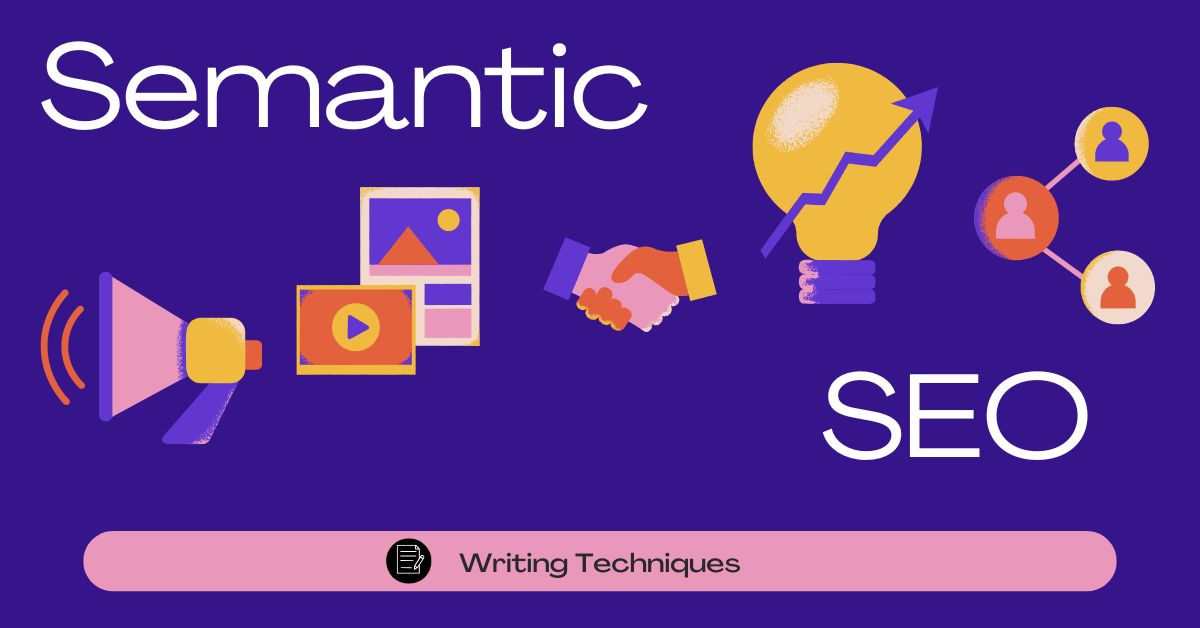Semantic SEO – The Writing Techniques That Powers Every Great Post
Table of Contents (Click to show/hide)









Search engines no longer reward keyword stuffing or other tricks that game the system. Instead, algorithms use natural‑language processing to infer what readers mean, who is asking and what related information might help. On deanlong.io we’ve already explored why you should write for humans, not for Google and how to find a niche in the market. This article builds on those ideas by introducing the semantic SEO framework – a step-by-step approach for crafting posts that answer users’ questions in context and demonstrate expertise.
TL;DR Summary Table with Examples
A quick reference of the core actions you should take when writing a semantically optimised article.
What is semantic SEO?
Semantics is the study of linguistic meaning — how words, phrases and sentences convey meaning beyond individual components. Semantic SEO applies this linguistic perspective to search: instead of stuffing keywords, you build pages that answer questions comprehensively and cover related concepts. For example, if a user searches for “best coffee beans”, they might also be interested in “how to store coffee beans” or “where to buy fresh coffee beans in Sydney”. Semantic SEO ensures your page addresses these associated topics so search engines can infer you’re an authoritative source.
Why is this important? Modern search algorithms use natural‑language processing to interpret intent and relationships between terms. They reward content that demonstrates expertise rather than simply repeating a term. It’s similar to what I discussed in my Brand vs. Performance Marketing play playbook.
Semantic SEO Framework – The Brief That Powers Every Great Post
This article explains how to write blog posts optimised for semantic SEO – an approach that emphasises meaning, context and user intent rather than repetitive keywords. It retains the original examples and a TL;DR summary table for quick reference.
Key Concepts
- Semantic search uses natural language processing and AI to understand the intent behind a query and the relationships between concepts. Repeating a keyword isn’t enough; you need to cover related topics and answer the reader’s underlying question.
- Topical relevance means your article should address subtopics that naturally connect to the main subject, including synonyms, related questions and underlying themes.
- E‑E‑A‑T (Experience, Expertise, Authoritativeness, Trustworthiness) is part of Google’s guidelines; credible sources and real examples strengthen your post.

Step-by-Step Framework
Set the tone from the beginning
Start with a thesis statement or hook that tells readers what they’ll learn.
Example: “Today, we spoke to the best baristas and other coffee experts about their favourite ways to make coffee at home and how you can improve your morning cup of joy.”
Write topic outlines
List the subtopics you’ll cover to ensure your article stays topically relevant.
Example (for a backlinks article):
- What are backlinks?
- Why are backlinks important?
- What types of backlinks are valuable?
- Best practices to generate backlinks
Mix things up
Combine short sentences with longer ones to keep the pace and highlight important points.
Example: “Be comprehensive, not fluffy. You’d want to make sure that your longer content remains valuable and on topic and does not include any unnecessary details.”
Take advantage of metaphors
Use analogies to explain complex ideas and make them more relatable.
Example: “Semantic SEO writing is like teaching search engines to think more like humans.”
Add credibility
Include data or quotes from trustworthy sources without overloading the reader.
Example: “According to a report by BrightEdge, 68 percent of all trackable website traffic is sourced from organic traffic and Paid Search, vastly exceeding all other channels, including Display and Social Media.”
Avoid vague terms
Avoid words like “most people” or “the majority.” Use specific numbers when possible.
Example: “Over 70 percent of respondents have agreed that…”
Use specific examples
Illustrate abstract ideas with concrete scenarios.
Example: Saying “the distance from Earth to the Sun is 93 million miles” isn’t tangible, but explaining that it would take 19 years to reach the Sun by plane immediately gives the reader a better sense of the distance.
Make your text logical, emotional and credible
Combine logic, emotion and credibility to elevate your writing.
Example: “A doctor with 25 years of experience suggested the patient go for the latter option to ensure he is able to return to his family as soon as possible. Statistically, patients who received occupational therapy services had a significant decrease in their risk of 30‑day hospital readmission.”
Avoid passive voice
Active voice feels more natural and engaging.
Example: “I keep butter in the fridge” versus “butter is kept in the fridge.”
Maintain a steady flow
Guide readers through your text with transitional words and phrases.
Example: “There were many storms in Orlando today. Similarly, Miami got bad weather, too.”
Don’t be afraid to repeat your key points
Restate important phrases to reinforce them for readers and search engines.
Example: “Concrete‑filled steel tubes are primarily utilised as columns in modern construction. The steel tubes that encase the concrete core within are usually thin.”
Use contrasting ideas
Highlight contrasting ideas to sharpen your argument.
Example: “You might be thinking that keyword‑stuffing is the way to go. But more natural semantic SEO writing is now taking over.”
Always summarise your key points
Summarise the main ideas at the end of a section or in your conclusion.
Example: “To sum up, eating too few calories can be dangerous and less effective for losing weight. So, try to reduce your calories by a healthy amount based on your doctor’s recommendation.”
Add images, graphs and tables
Keep it short
Don’t make your article longer than it needs to be. Research suggests that 1 000–2 000 words is often the sweet spot for comprehensive yet engaging posts.
Final thoughts
Creating and optimising content for search is no longer about repeating exact keywords; it’s about relevance and value. By following the semantic SEO framework above, you’ll produce articles that answer readers’ questions in depth, demonstrate expertise and build the signals search engines look for. Focus on helping your audience and you’ll earn higher rankings as a result.
References / Tools
- Semantics – Wikipedia – Definition of semantics and linguistic meaning
- Write for Humans, Not for Google – Dean Long’s guidance on human‑centric SEO
- Find a Niche in the Market & Grow Zero‑Volume Keywords – An article on niche keyword strategy
- Organic Share of Traffic Increases to 53 % – BrightEdge – Research highlighting the dominance of organic traffic
- Make Quality Content: Google’s E‑E‑A‑T Guidelines – How to build expertise, experience, authority and trust
Other Relevant Reads in DEANLONG.io
- Dodge the Duds with Smart Search-Craving Ad Crafting
- Best Practices for Google Text Ad Copies (With Creative Copy Templates)
- Good Tips For Optimising Google Ads Performance Assets
- Search Engine Optimisation (SEO Audit)









